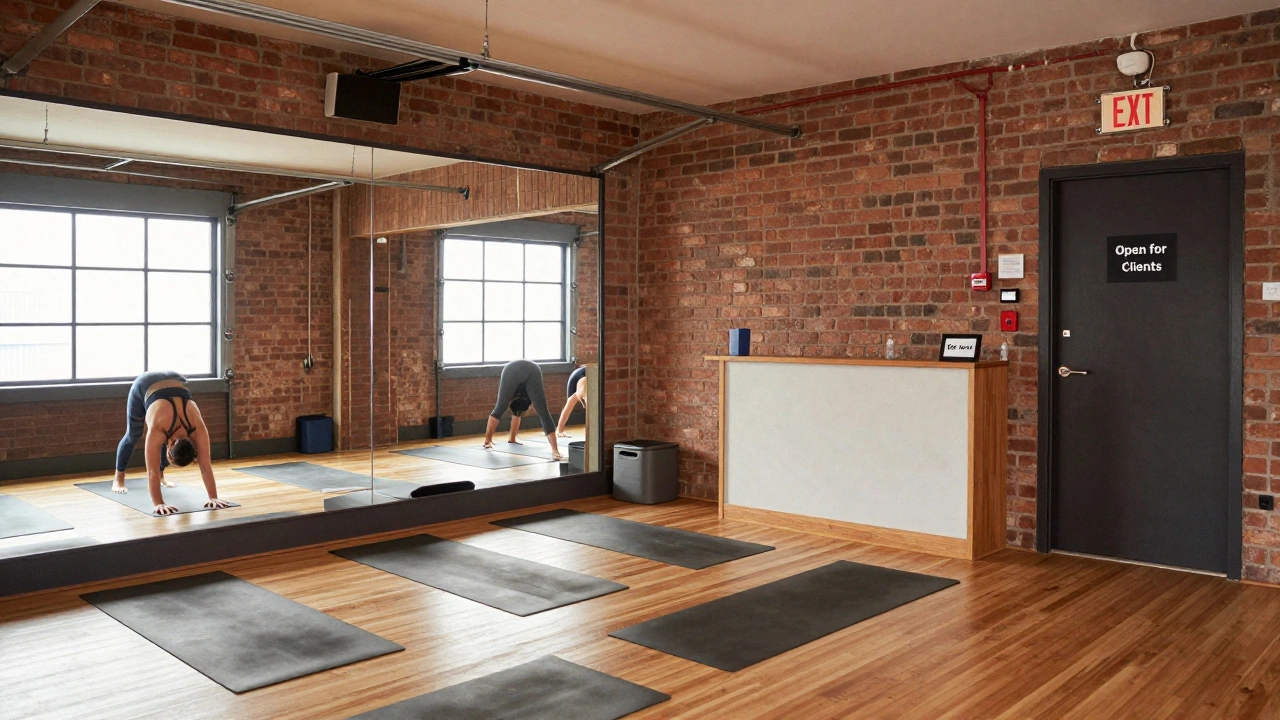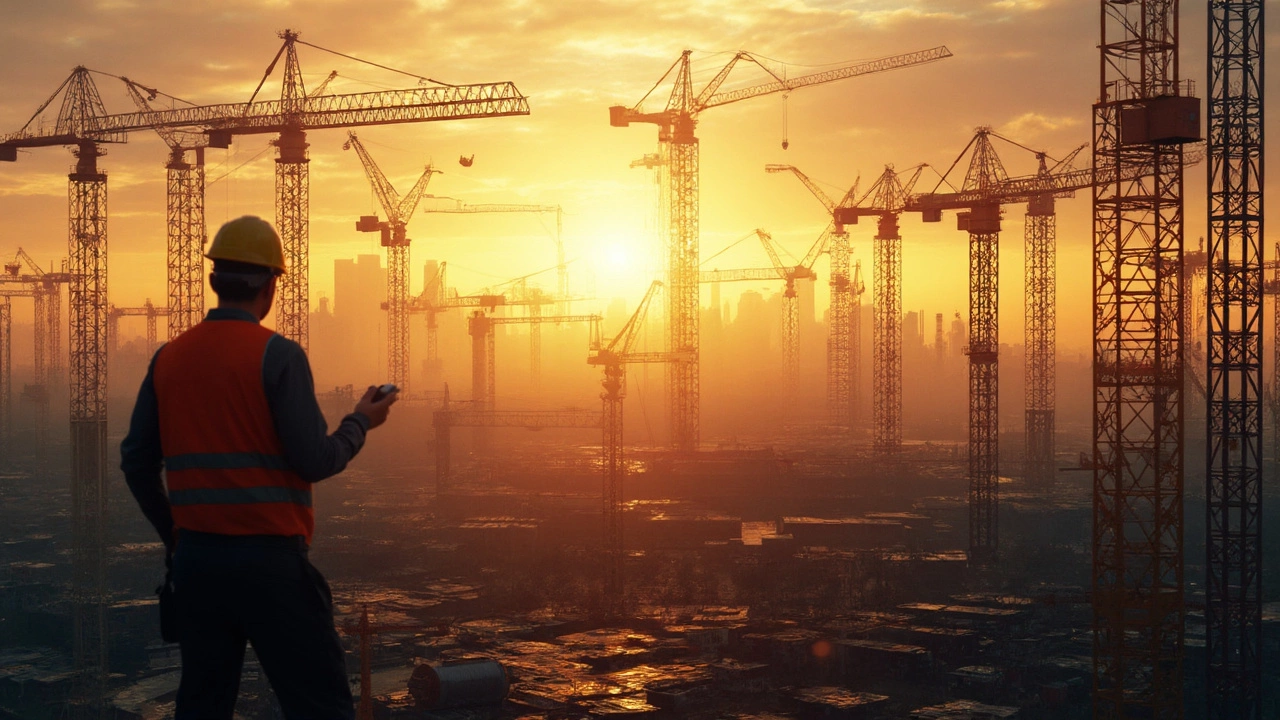Commercial Construction: Building Spaces for Business
Core concepts you need to know
When working with Commercial Construction, the process of creating buildings that host business activities such as offices, shops, hotels, and restaurants. Also known as business construction, it blends design, engineering, budgeting, and code compliance. Commercial Construction is not just about bricks; it’s about matching a client’s brand, foot traffic, and future growth plans. This field covers a wide range of project sizes, from a small cafe fit‑out to a multi‑story office tower, and each scale brings its own timeline pressures and stakeholder groups. Understanding zoning rules, fire safety standards, and accessibility requirements early on saves money and avoids permit delays. The sector also interacts with Industrial Construction, the building of factories, warehouses, and large‑scale production facilities, because material choices, site logistics, and structural systems often overlap. Knowing how industrial needs can shape commercial decisions, like opting for heavier floor loads to support equipment, helps you pick the right structural system from the start.
One common structural system you’ll hear about is Type 5 Construction, a wood‑frame method favored for its cost‑effectiveness and flexibility in many commercial projects. While it keeps budgets in check, it also brings fire‑risk considerations that require sprinkler systems, fire‑rated assemblies, and proper compartmentalisation. When a project calls for a fast build and later adaptability—think a boutique hotel that may expand or a retail space that rotates tenants—Type 5 often wins because the wooden studs can be modified without massive demolition. This method directly influences the definition of a Commercial Building, a structure designed primarily for business transactions, housing offices, shops, services, or hospitality venues. Commercial buildings must meet specific zoning codes, parking ratios, and energy standards, all of which shape the design and construction timeline. For example, a coffee shop in a city centre may require a higher floor‑area ratio than a suburban office suite, dictating how many levels the Type 5 frame can support. Understanding these attributes helps owners avoid costly redesigns once permits are in hand and ensures that the final space works for both tenants and investors.
Putting it all together, commercial construction demands a solid grasp of project scope, material options, and regulatory demands. Whether you’re comparing it to residential work, weighing industrial influences, or choosing a Type 5 frame, each decision ripples through cost, schedule, and long‑term performance. Risk management tools like Building Information Modeling (BIM) let teams visualise clashes between mechanical systems and structural elements before they hit the site, cutting change orders dramatically. Sustainable design choices—such as using low‑embodied‑energy timber in Type 5 or installing energy‑efficient HVAC—add market appeal and can qualify projects for green‑building certifications. Below you’ll find articles that break down the differences between commercial and residential builds, explain how industrial projects differ, and dive into the specifics of building types and non‑commercial alternatives. Use these insights to sharpen your planning, spot hidden risks, and pick the right path for your next business‑focused build.
What Falls Under Commercial Use in Construction?
Commercial use in construction includes any business activity in a building - from clinics to coffee shops. Learn what qualifies, zoning rules, building codes, and how to avoid costly mistakes.
full articleWhat Is Considered Heavy Civil Construction?
Heavy civil construction includes large public infrastructure like highways, bridges, dams, and water systems. It’s not about buildings - it’s about the essential systems that keep cities running.
full articleCommercial vs Residential Real Estate: Where Should You Start?
Not sure whether to jump into commercial or residential real estate? This article breaks down the real-world differences between the two, from income potential and risk to lifestyle and skills needed. You'll learn how deals actually work, what it's really like day to day, and which path fits your goals and strengths. Get honest advice based on hands-on experience, not just theory. Save yourself years of guesswork with specific tips for picking your lane.
full articleCommercial vs. Residential Construction: Which Is Better?
Deciding between commercial and residential construction isn't just about bricks and mortar—it's about understanding your goals and what each can offer. This piece explores the essential differences, including cost, scope, and future opportunities. Whether you're into building skyscrapers or cozy homes, knowing these differences can steer your next big decision. Discover practical insights and tips that lead you to the perfect choice.
full articleIs Industrial and Commercial Construction the Same?
Ever wondered what sets industrial construction apart from commercial construction? While they might seem similar, there's more than meets the eye. Both play crucial roles in our surroundings but come with different challenges and purposes. From the type of projects to financial planning, understanding these differences can be a game-changer for those venturing into or involved in the construction sector.
full articleWhat Defines a Commercial Building?
Understanding what makes a building commercial is crucial for anyone in construction, real estate, or business planning. Commercial buildings are spaces meant for business activities, like retail, offices, or services. These buildings have specific features and zoning laws that separate them from residential ones. This article delves into what sets commercial buildings apart and explores interesting facts and practical tips related to their construction and use.
full articleDifference Between Commercial and Industrial Construction
Commercial and industrial construction may seem similar, but they cater to different needs. Commercial construction focuses on buildings for business activities like offices, retail, and restaurants. Industrial construction, on the other hand, involves facilities for manufacturing, storage, and logistics. Understanding these differences can help businesses make informed decisions when planning new projects.
full articleUnderstanding Non-Commercial Construction: A Comprehensive Guide
Non-commercial construction represents the non-commercial side of building projects. It focuses on the creation of structures intended for private use or specific community purposes. Unlike commercial construction, which aims to generate profit, this form of construction includes residential homes, schools, and community centers. Such projects prioritize comfort, safety, and community needs over financial return.
full articleUnderstanding Type 5 Construction in Commercial Buildings
Type 5 construction, commonly known as wood-frame construction, is frequently utilized in creating various commercial structures. This construction type is favored for its cost-effectiveness and versatility, accommodating a range of designs and layouts. However, its use comes with particular fire risk considerations, necessitating specific safety measures. Understanding the benefits and limitations of Type 5 construction can lead to more informed decisions in commercial building projects.
full article








